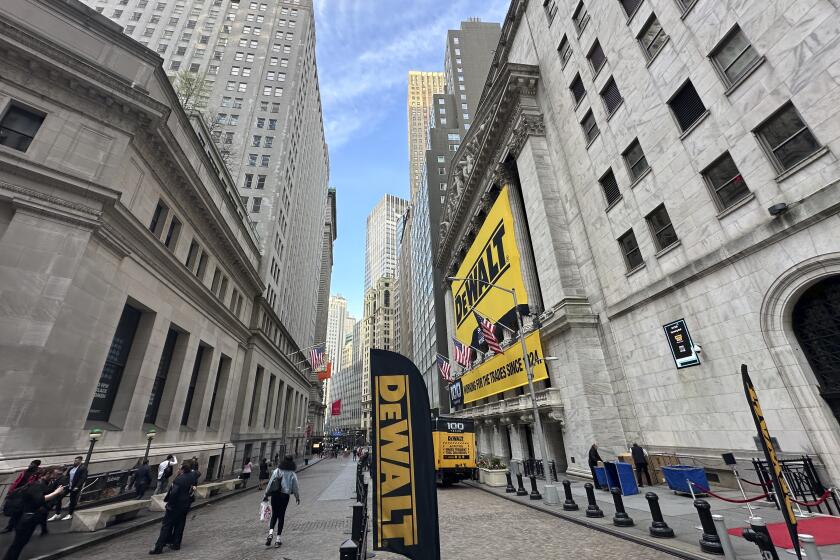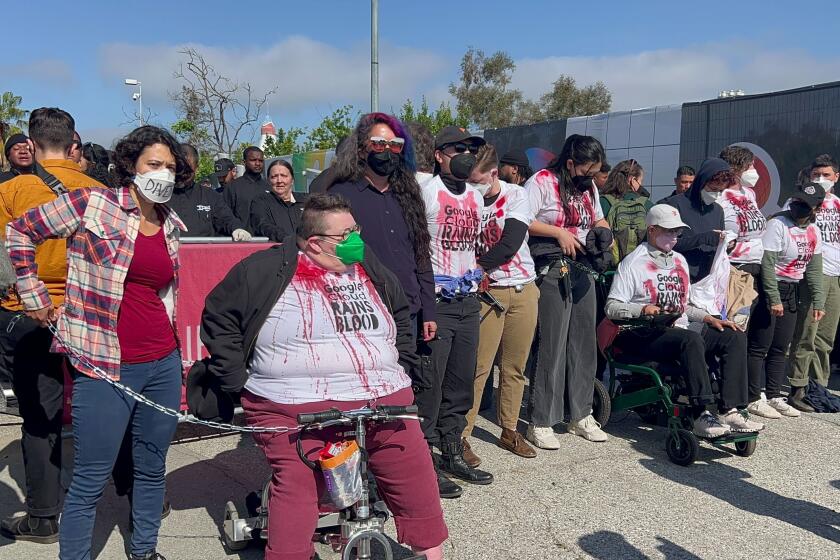Fed Signals Policy Shift Is in Works
Moving to manage a reviving American economy, Federal Reserve policymakers Tuesday took a first step toward raising interest rates, dropping their position that a recession is the nation’s biggest economic danger.
As expected, the central bankers left their key interest rate at a four-decade low of 1.75%. But they accompanied their decision with word that they believe the risks are no longer tilted toward recession, but instead are balanced with the danger of excessive growth.
That represented a huge change for the Fed, which slashed rates 11 times last year in an effort to keep the economy afloat. Tuesday’s announcement was widely interpreted as preparing borrowers and investors for the possibility of rate hikes this year.
“The recession is over, and it’s time for the Fed to start thinking about leaning in the other direction,” said Los Angeles economist Donald H. Straszheim.
Stocks closed mixed on news of the Fed’s decision with investors fearful that central bank rate hikes could take some of the starch out of the recovery. But the bellwether Dow Jones industrial average managed to close at a nine-month high.
The Dow rose 57.50 points, or 0.5%, to close at 10,635.25, its highest close since June 21. The Standard & Poor’s 500 index climbed 4.74, or 0.4%, to 1,170.29. The Nasdaq composite index was up 3.81, or 0.2%, to 1,880.87.
Some borrowing costs appear to have risen in anticipation of future Fed rate hikes. The yield, or market interest rate, on the benchmark 10-year Treasury note, to which many home mortgages are tied, has climbed more than a quarter point since March 7 when Fed Chairman Alan Greenspan told Congress a recovery is underway.
The Fed’s decision to change its policy from one that favored further rate cuts to a neutral stance signals an end to one of the most aggressive periods of rate cuts in the central bank’s history. Beginning with an unusual, inter-meeting rate cut Jan. 3 of last year, policymakers slashed the funds rate from 6.5% to 1.75%.
But in a surprise, Fed policymakers seemed to back away from some of Greenspan’s most optimistic language about the economy, even as they agreed it is on the mend. Analysts said the difference in tone illustrates the tough task that lies ahead for the central bank in gauging the extent of recovery and tailoring policy to it.
Members of the Federal Open Market Committee, headed by Greenspan, agreed that the economy “is expanding at a significant pace.” But they attributed most of the improvement to the one-time pop of companies replenishing inventories.
Other than that, the committee said, “the degree of the strengthening in final demand over the coming quarters, an essential element in sustained economic expansion, is still uncertain.”
That assessment seemed to significantly differ from the picture Greenspan painted in Senate testimony. “The recent evidence increasingly suggests that an economic expansion is already well underway,” he told lawmakers.
“We’re getting whipsawed by the Fed. I think they’re a little confused about what they ought to be doing,” said Dominic Konstam, head of interest rate strategy at Credit Suisse First Boston Corp. in New York.
In a nutshell, said Konstam and others, the Fed’s dilemma is that it wants to help the economy come back in a balanced fashion with deeply depressed corporate investment reviving to match still-buoyant consumer spending and a stock market that seems ready to takeoff.
It might be able to do so by raising interest rates a little, which some analysts said would encourage consumers to save more and help convince firms that growth would be sustained and they should go back to investing.
But if the central bank acted, it would do so without the usual excuse that it was controlling inflation, which has been tame. And policymakers would risk strengthening a strong dollar, which has made a hash of U.S. exports.
Indeed, some analysts said trade figures issued Tuesday, which showed an unexpected deterioration in exports and a widening trade gap, will discourage the Fed from acting quickly.
“The absence of a convincing export recovery will help convince the Fed that an early [interest rate] tightening would be ill-advised,” said Maury Harris, chief economist with UBS Warburg in New York.
If growth continues, however, analysts said the central bank eventually will have to act. “The Fed is trying to walk a fine line, but they are going to have to normalize rates,” said Diane C. Swonk, chief economist with Bank One Corp. in Chicago.
At 1.75%, the Fed-controlled federal funds rate is at its lowest level since 1961. Swonk and others said that given the economy’s state, a “normal” rate, which would neither speed up nor slow down growth, would be between 3% and 4%.
The economy’s revival has caught economists and Fed officials by surprise. The gross domestic product, the nation’s total output of goods and services, grew at an unexpected 1.4% annual rate in the final three months of last year. Manufacturing expanded in January and February for the first time in a year and a half. American employers added 66,000 workers in February, the first expansion of payrolls since July.






